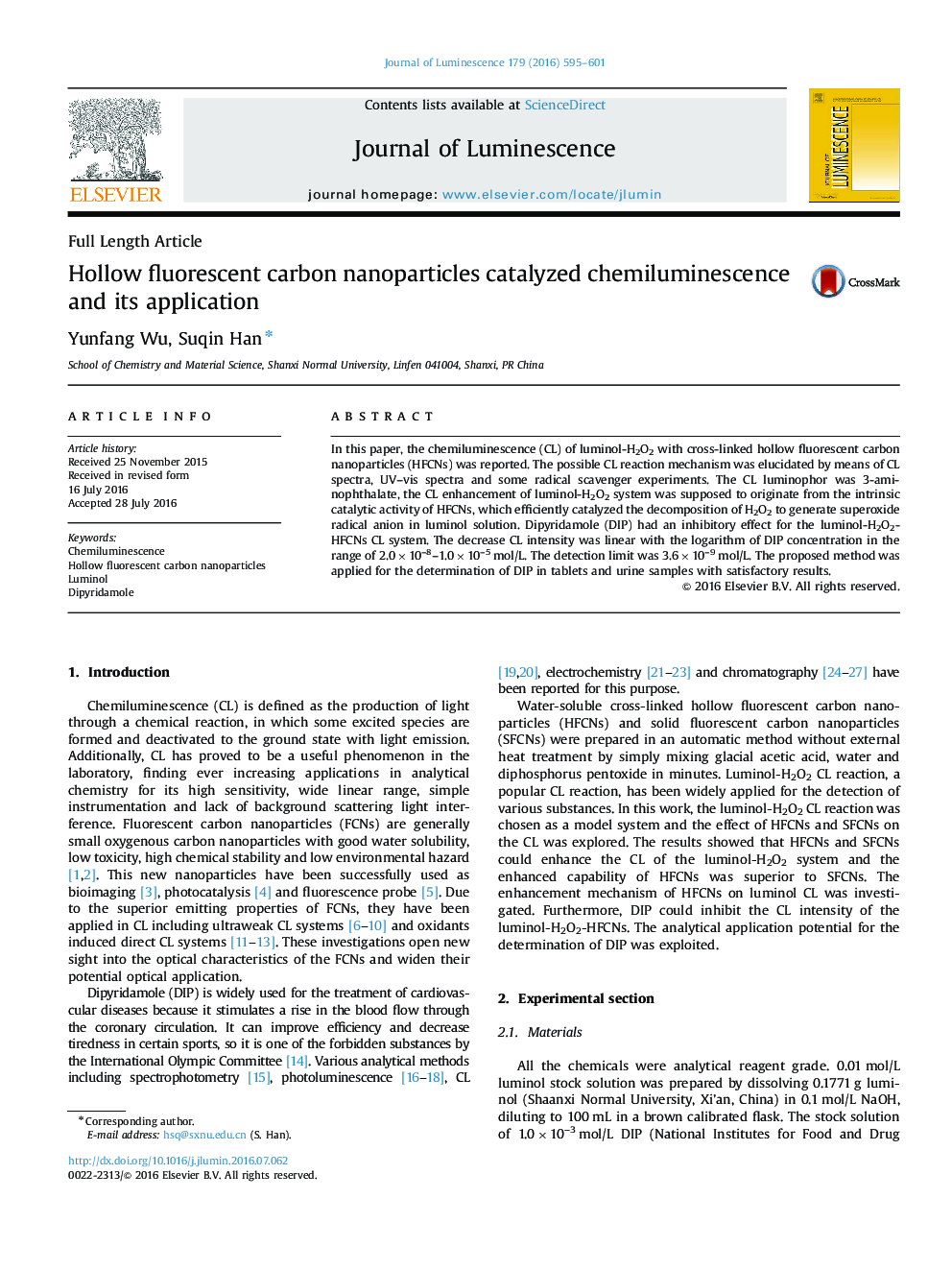| Article ID | Journal | Published Year | Pages | File Type |
|---|---|---|---|---|
| 5398372 | Journal of Luminescence | 2016 | 7 Pages |
Abstract
In this paper, the chemiluminescence (CL) of luminol-H2O2 with cross-linked hollow fluorescent carbon nanoparticles (HFCNs) was reported. The possible CL reaction mechanism was elucidated by means of CL spectra, UV-vis spectra and some radical scavenger experiments. The CL luminophor was 3-aminophthalate, the CL enhancement of luminol-H2O2 system was supposed to originate from the intrinsic catalytic activity of HFCNs, which efficiently catalyzed the decomposition of H2O2 to generate superoxide radical anion in luminol solution. Dipyridamole (DIP) had an inhibitory effect for the luminol-H2O2-HFCNs CL system. The decrease CL intensity was linear with the logarithm of DIP concentration in the range of 2.0Ã10-8-1.0Ã10-5Â mol/L. The detection limit was 3.6Ã10-9Â mol/L. The proposed method was applied for the determination of DIP in tablets and urine samples with satisfactory results.
Keywords
Related Topics
Physical Sciences and Engineering
Chemistry
Physical and Theoretical Chemistry
Authors
Yunfang Wu, Suqin Han,
